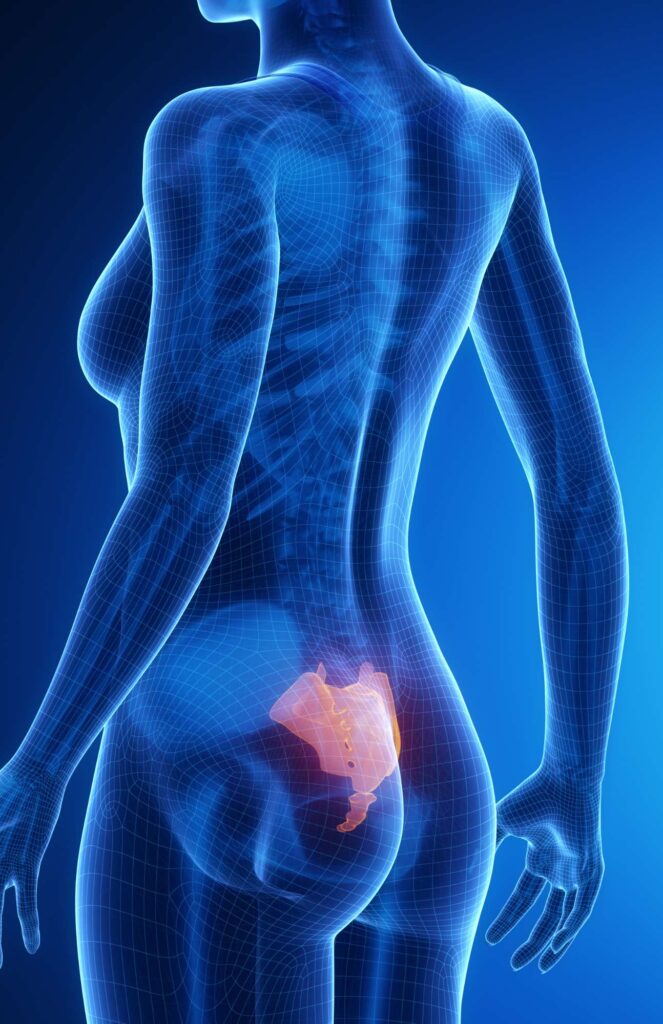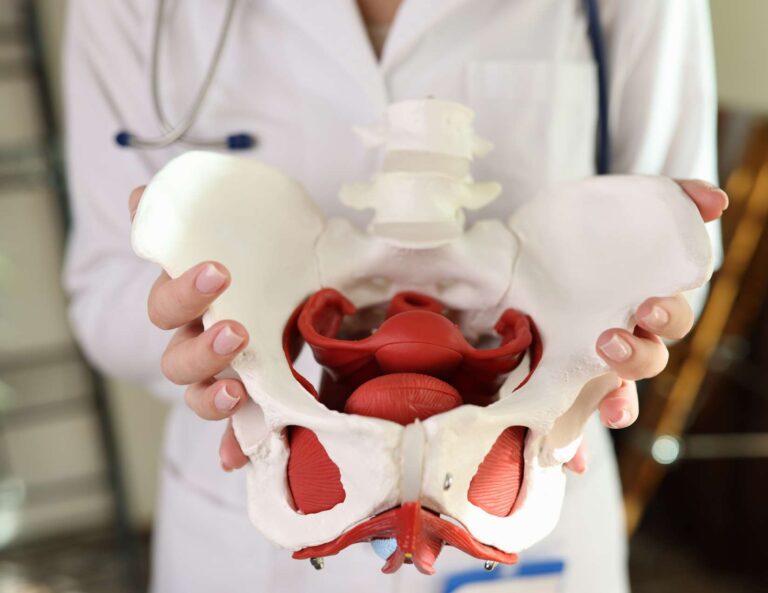Easy and Effective Home Remedies for SI Joint Pain
Last Updated on October 30, 2023 by Dr. Tiffany Egan
As someone who has experienced SI joint pain firsthand, I understand the frustration and discomfort it can bring. The sacroiliac (SI) joint, located in the lower back, plays a crucial role in connecting the spine to the pelvis. When this joint becomes inflamed or dysfunctional, it can result in debilitating pain and limited mobility. In this article, I will guide you through a range of natural, effective home remedies for SI joint pain that can help you find relief and restore your mobility.
Table of Contents
Understanding the causes of SI joint pain
Before we dive into the remedies, it’s important to understand the causes of SI joint pain (sacroiliac joint dysfunction). The most common causes include:
- Injury or trauma: A fall, accident, or sports-related injury can damage the SI joint and surrounding ligaments, leading to pain and inflammation.
- Pregnancy: During pregnancy, hormonal changes can cause increased laxity in the SI joint, resulting in pain and discomfort.
- Arthritis: Conditions such as osteoarthritis or ankylosing spondylitis can affect the SI joint, causing pain and stiffness.
- Muscle imbalances: Weakness or tightness in the surrounding muscles, such as the glutes or hip flexors, can put extra stress on the SI joint.
By identifying the underlying cause of your SI joint pain, you can better tailor your home remedies to address the source of your pain and provide effective relief.

Common symptoms of SI joint pain
Recognizing the symptoms of SI joint pain is crucial for proper diagnosis and treatment. Common signs to watch out for include:
- Lower back pain: Low back pain, typically on one side, is a hallmark symptom of SI joint dysfunction.
- Buttock or hip pain: Discomfort may radiate from the SI joint to the buttocks or hips, making it challenging to pinpoint the exact source of pain.
- Pain during movement: Activities like walking, standing, or climbing stairs can exacerbate SI joint pain.
- Pain when transitioning: Changing positions, such as going from sitting to standing or turning over in bed, can trigger sharp, shooting pain in the SI joint area.
If you experience these symptoms and have severe pain, it’s important to consult with a healthcare professional for a proper diagnosis. In the meantime, these natural home remedies for SI joint pain are the best way to offer relief and aid in your recovery.

The importance of natural remedies for SI joint pain
The good news is that when it comes to managing SI joint pain, there are several nonsurgical treatments and natural remedies that can provide significant relief without the potential side effects associated with medication. By adopting a holistic approach, you can address the underlying causes of the pain and promote long-term healing. Let’s explore some effective natural remedies for SI joint pain that you can easily incorporate into your daily routine.
Hot and cold therapy for SI joint pain relief
Hot and cold therapy is a simple yet effective method for reducing inflammation and soothing sacroiliac pain. Applying heat to the affected area helps increase blood flow, relax tight muscles, and alleviate stiffness.
On the other hand, cold therapy helps numb the area, reduce swelling, and relieve acute pain. Here’s how you can incorporate hot and cold therapy into your routine:
- Hot therapy: Use a heating pad, hot water bottle, or warm towel to apply heat to the affected area for 15-20 minutes at a time. Repeat this process several times a day to experience the benefits of increased blood flow and muscle relaxation.
- Cold therapy: Wrap an ice pack or a bag of frozen vegetables in a thin towel and apply it to the SI joint area for 10-15 minutes. Repeat every few hours to reduce inflammation and alleviate pain.
Remember to always use a barrier, such as a towel, between the heat or cold source and your skin to prevent burns or frostbite.

Exercises and stretches for strengthening the SI joint
Engaging in specific exercises and stretches can help strengthen the muscles around the SI joint, providing stability and reducing pain. Here are a few strengthening exercises and stretches you can incorporate into your daily routine:
- Glute bridge: Lie on your back with your knees bent and feet flat on the floor. Lift your hips off the ground, squeezing your glutes. Hold for a few seconds, then lower back down. Repeat 10-15 times.
- Piriformis stretch: Sit on the edge of a chair with your feet flat on the ground. Cross your affected leg over the opposite knee, then gently lean forward, feeling a stretch in your buttocks. Hold for 30 seconds, then switch sides.
- Hip flexor stretch: Kneel on one knee with the other leg in front of you, foot flat on the ground. Lean forward, keeping your back straight, until you feel a stretch in the front of your hip. Hold for 30 seconds, then switch sides.
Recent scientific studies have shown a positive correlation between gluteus maximus strength and sacroiliac joint dysfunction. So, start working out those glutes!
The best course of action is to start slowly and listen to your body. If any exercise or stretch exacerbates your pain, stop immediately and consult with a healthcare professional such as a chiropractor or physical therapist.
Physical therapy is a great way to get personalized exercises for your SI pain.
Be mindful of aerobic exercises that work large muscle groups such as running, jumping, kickboxing, etc. as they may cause a flare up in the SI joint.
Herbal remedies for reducing inflammation and pain
Nature provides us with a wide range of herbs that possess anti-inflammatory and pain-relieving properties. Incorporating these herbal remedies into your routine can provide relief from SI joint pain. Here are a few herbs that have shown promising results:
- Turmeric: Known for its powerful anti-inflammatory properties, turmeric can help reduce pain and inflammation in the SI joint. Add turmeric powder to your meals or consider taking a turmeric supplement after consulting with your healthcare provider.
- Ginger: With its natural analgesic properties, ginger can help alleviate SI joint pain. Brew a cup of ginger tea or incorporate fresh ginger into your meals for added relief.
- Devil’s claw: This herb has been used for centuries to relieve joint pain and inflammation. Consider taking devil’s claw supplements, following the recommended dosage, to experience its benefits.
Always consult with a healthcare professional or herbalist before incorporating herbal remedies into your routine, especially if you have any underlying medical conditions or are taking medications.

Essential oils for SI joint pain relief
Essential oils have been used for centuries to promote healing and reduce pain. Their natural properties can provide relief from SI joint pain when used topically or through aromatherapy. Here are a few essential oils that may help alleviate your discomfort:
- Eucalyptus oil: Known for its analgesic and anti-inflammatory properties, eucalyptus oil can provide soothing relief when applied topically. Mix a few drops of eucalyptus oil with a carrier oil, such as coconut or almond oil, and massage it into the affected area.
- Lavender oil: With its calming properties, lavender oil can help relax muscles and reduce pain. Add a few drops of lavender oil to a warm bath or mix it with a carrier oil for a soothing massage.
- Peppermint oil: The cooling sensation of peppermint oil can help numb the area and alleviate pain. Dilute a few drops of peppermint oil with a carrier oil and gently massage it into the SI joint area.
Remember to perform a patch test before using any essential oil topically and discontinue use if you experience any adverse reactions.
Also, here are some essential oils for sciatica that can help with discomfort in the general area.
Dietary changes and supplements for managing SI joint pain
Making dietary changes and incorporating certain supplements into your routine can have a significant impact on managing SI joint pain. Here are a few tips to consider:
- Anti-inflammatory diet: Focus on incorporating foods that have anti-inflammatory properties, such as fatty fish, leafy greens, berries, and nuts. Avoid processed foods, sugar, and refined carbohydrates, as they can increase inflammation in the body.
- Omega-3 fatty acids: Consider adding omega-3 fatty acid supplements to your daily routine. These healthy fats have been shown to reduce inflammation and promote joint health.
- Vitamin D: Adequate levels of vitamin D are essential for bone health. Consider getting your vitamin D levels tested and discussing supplementation with your healthcare provider if necessary.
Remember that dietary changes and supplements should be tailored to your specific needs and any underlying medical conditions. Consult with a healthcare professional or registered dietitian for personalized advice.

Lifestyle modifications for preventing SI joint pain recurrence
Prevention is key when it comes to SI joint pain. By making certain lifestyle modifications, you can reduce the risk of recurrence and promote a healthier, pain-free life. Here are a few tips to consider:
- Maintain a healthy weight: Excess weight puts additional strain on the SI joint and can contribute to pain. Focus on maintaining a healthy weight through a balanced diet and regular exercise.
- Practice good posture: Poor posture can lead to imbalances and stress on the SI joint. Be mindful of your posture throughout the day, and consider using ergonomic supports, such as lumbar cushions or standing desks, to maintain proper alignment. Here are some of the best office chair cushions for buttock pain recommendations that I have!
- Strengthen core muscles: Building a strong core can provide stability and support to the SI joint. Incorporate home exercises such as planks, bird dogs, and side planks into your routine to strengthen your abdominal and back muscles.
By adopting these lifestyle modifications, you can reduce the likelihood of SI joint pain recurrence and enjoy a better quality of life.
When to seek professional help for SI joint pain
While home remedies can provide significant relief for SI joint pain, there may be instances where professional help is necessary. If you experience any of the following, it’s important to consult with a healthcare professional to get an accurate diagnosis:
- Severe, unrelenting pain
- Chronic Pain
- Difficulty walking or performing daily activities
- Numbness or weakness in the legs
- Pain that worsens despite home remedies
A healthcare professional can get a thorough medical history, perform a thorough evaluation, recommend additional treatments or therapies, and provide personalized guidance for treatment options based on your specific condition.

Conclusion: Restoring mobility and finding relief with natural home remedies for SI joint pain
SI joint pain can be a debilitating condition that affects your daily life. By incorporating natural home remedies for SI joint pain into your routine, you can find relief and restore mobility. From hot and cold therapy to gentle exercises, herbal remedies, essential oils, and dietary changes, there are numerous options to explore.
Remember to listen to your body, consult with healthcare professionals when needed, and make necessary lifestyle modifications to prevent future recurrences. With dedication and a holistic approach, you can overcome SI joint pain and regain your quality of life.
Disclaimer: The information in this article is intended for informational purposes only and should not be taken as medical advice. Always consult with a healthcare professional before starting any new treatment or making changes to your existing routine.
***If you’re looking for natural, effective home remedies for SI joint pain, start by incorporating hot and cold therapy, exercises, and herbal remedies into your routine. Remember to consult with a healthcare professional for personalized guidance and explore various options to find what works best for you. Take control of your SI joint pain and restore your mobility today!






